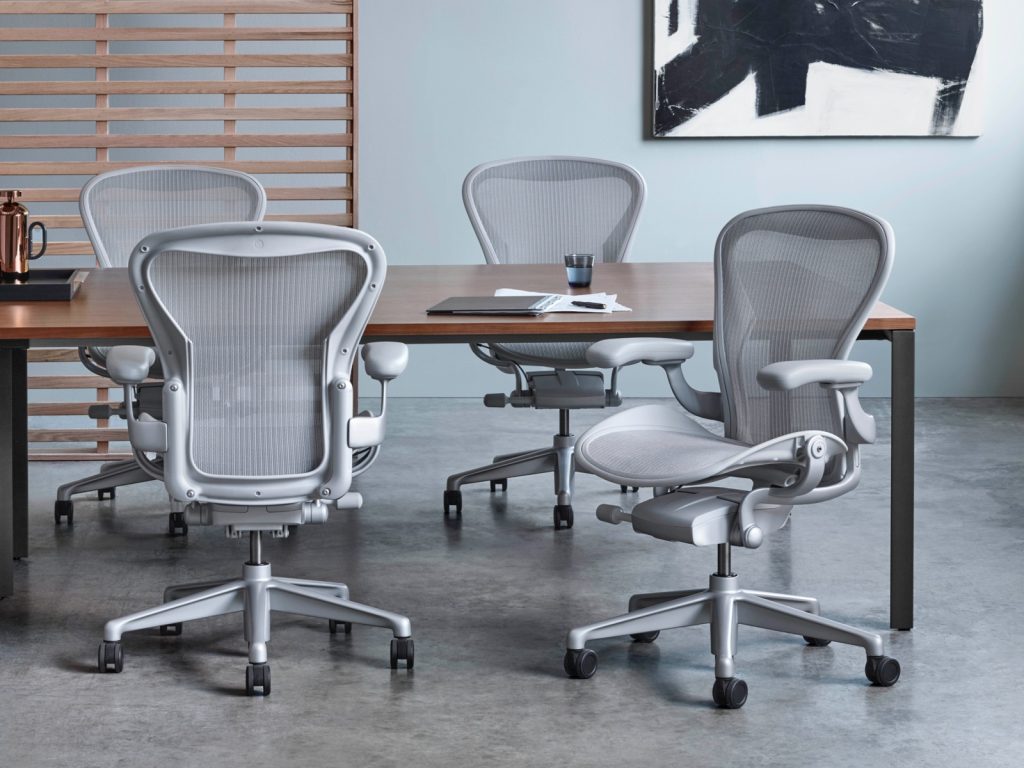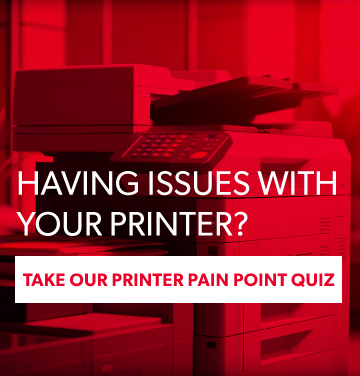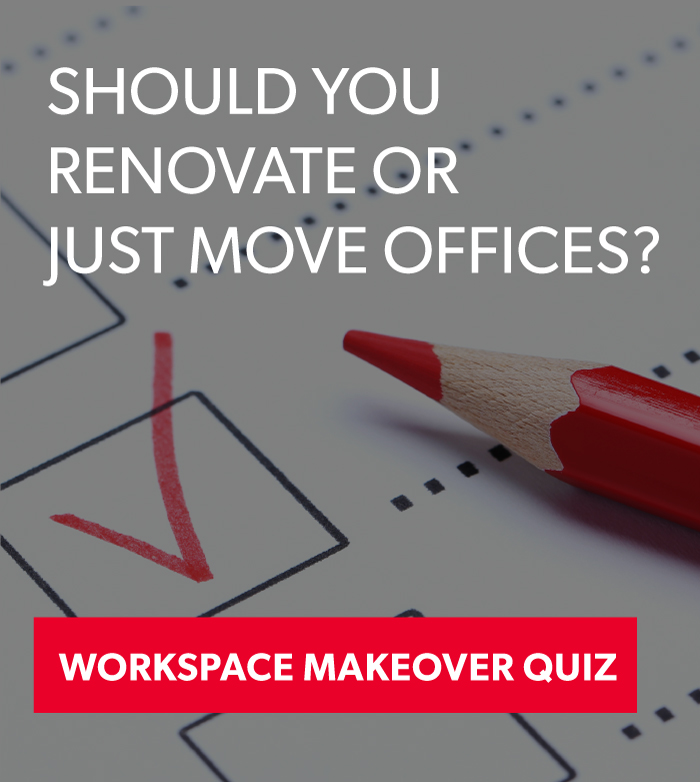How does office furniture help your business?
It may seem silly to talk about standing desks, beanbag chairs, accent walls and designer couches as critical components of your business’s competitive advantage, but don’t underestimate the significant functional role that office aesthetics can play.
“Office aesthetics?” you say. “We’re an accounting firm, not a tech company or an art gallery.” So what does aesthetics, which is defined as a set of principles concerned with the nature and appreciation of beauty, especially in art, have to do with growing your client base and acquiring new customers?
Well, that’s the thing. Office furniture isn’t merely an aesthetic practice meant to make your office look “cool” or “modern” or “hip.” Having the right office furniture (and the right office design partner) combines form and function to make the most of your office space and the pieces inside it. The right furniture is both beautiful and highly practical.
When thinking about office furniture and office design, we want to address four key areas of your business.
What should good office design provide?
- Employee health & wellness
Furniture and design that is accessible, ergonomic, and supports employee wellness. - Communicating your brand
Office furniture delivers visual cues about your brand to employees, office visitors, and potential customers. - Bringing your culture to life
Your office furniture should support the way your company culture influences your product and processes. - Improving productivity and efficiency
By addressing issues of brand, culture, and people, the right office furniture should help you drive towards crucial business outcomes and success.
How does the right furniture support the health & wellness of my employees?
Estimates say that the average office employee sits for more than 12 hours per day or more than 4,000 hours per year. “Sitting disease” is one of the most unanticipated health threats of modern times. Physical inactivity is the fourth leading risk factor for global mortality. Many businesses now use standing desks, tall bar-style boardroom tables, and other furniture to encourage employees to get up and stretch their legs. But it’s more than simple ergonomics that help support health and wellness in the workplace. The right office design takes into consideration issues of lighting to reduce stress on delicate eyes, airflow and temperature control to reduce electricity costs and even seeks to address the problems associated with mental health and wellness.
The right furniture and environment can help reduce stress and improve comfort, which are essential factors in mental health and wellness. Even colour choice can have a calming effect on employees who are spending more and more time at work.
When you’re thinking about an office redesign, your people should help define your needs and priorities. “If you just say ‘I want a desk’ and then base it on dollars, you’ll get a product that serves a function but not the one you want filled,” says Jeff Menard, chief building officer for the Town of West Lincoln. “Think about the people who will use it. It should optimize their work. It’s an investment in your staff and it’s going to be there for a long time.” Find out more about the municipal office redesign we did with Jeff and the Town of West Lincoln.
How does the right furniture communicate my brand?
We don’t want to get too abstract here but, like anything properly designed, furniture communicates. It has meaning beyond “chair” or “table.” Let’s look at an example: the Herman Miller Aeron Chair.

The Aeron Chair, designed in 1992 by Don Chadwick & Bill Stumpf, became the defacto “dot-com throne” in the early years of the Internet economic revolution. The chair (retailing at USD 1,395.00) is made from recycled materials, has a sleek and futuristic design and, as far as branding goes, stood in stark contrast to the stuffy, extravagant, leather-bound chairs from executive offices of the “old” economy. As a status symbol, the Aeron chair meant “new” and “innovative” and “futuristic.”
The good news is you don’t need a $1,400 chair to communicate your brand.
If you’re a more traditional business like a bank, insurance brokerage, or accounting firm, you may want furniture that helps describe the trust, stability, and integrity that is the backbone of your industry. For those industries, the right furniture should communicate to clients and employees a sense of classic refinement, combined with a timeless modern look that always seems in fashion (much like the vital services you provide).
Perhaps you’re a marine transportation business celebrating 60 years in business, a fresh new rebrand, and recent change of ownership. How do you design a new office space that would both honour the company’s exciting past and look forward to a bright future? See how Beatties helped McKeil Marine pull it off when they moved into a new 16,000 square foot head office, including open concept work area, 40 workstations, lunchroom, main filing area, board room, two meeting rooms and 12 private offices.
On the other hand, an innovative, fast-moving technology company may opt for furniture that is more playful, inventive, and (let’s be honest) maybe a little impractical or silly. As an industry that is more rapidly embracing alternative working situations (work from home, or define your own hours), a tech brand may choose more adaptive or modular furniture that can be easily moved around and reconfigured.
How does the right furniture support my company culture?
When masterfully done, distinctions of “brand” and “culture” blend together to reinforce what you do and how you do it. You may be a “traditional” business like a bank or insurance broker. But maybe your innovative approach to business helps set you apart from the competition. You encourage your employees to be risk-takers and to “think big.” You’ll want furniture that helps support collaboration and brainstorming possibilities. Maybe it’s modular mini-boardrooms for new idea generation, or “hot desks” that encourage employees from marketing or finance to sit-in with different departments for a few days.
When global hearing-aid innovator Unitron needed to expand their Canadian sales office, they wanted their office to create a warm, inviting collaborative space as economically as possible. “We’re making an overall change to a more open and innovative and collaborative working space. It’s no longer just desks and chairs,” said Sue Delooze, Director HR for Unitron Canada and our project coordinator for the office redesign we helped furnish in 2016. “We’re buying sofas and lounge chairs and live edge coffee tables. I wish there was room for a hammock.” We couldn’t get the hammock in, but check out how we helped Unitron get the office they wanted.
The right furniture and office design should help support how you work and help you effectively communicate the why that is the backbone of your corporate culture.
How does the right furniture improve business productivity and efficiency?
The right furniture and office design helps improve business productivity and efficiency by effectively integrating employee health and wellness while communicating important brand ideas and helping people work more effectively.
There’s no question that when employees are motivated, healthy, and comfortable at work, they’ll perform better. In the past few years there has been a dramatic increase in scientific study on the effects of motivation, health, and employee engagement on workplace performance. In one study by Tom DeMarco and Timothy Lister, the researchers found that employee workspaces contributed dramatically to improved performance. In a comparison study of software programmers, DeMarco and Lister found a 10:1 improvement in efficiency where employees had much more positive things to say about their workspace compared to other groups.
When furniture helps communicate the importance of the brand and unite everyone under a common purpose, amazing things can happen. In a survey of 3,000 people, research from Gallup showed that 41% of employees surveyed did not know what their company stands for, or what differentiates the brand from competitors. Having a branded workspace can help communicate these important differences and help you stand out from the competition in the marketplace, and in the workplace.
When the chairs, desks, deck chairs, living walls, hammocks, and whatever else you call “furniture” help your employees live the culture that supports your business products and processes, well, that’s when the magic happens. If your business culture is based on open communication and transparency, having a bunch of isolated cubicles goes against the basic principles you are trying to inspire your employees to live by. If your business culture encapsulates the values of your brand, how are those values lived in the workspace of your employees?
At Beatties, We Speak Office Furniture. We specialize in helping organizations of all sizes make their redesign and renovation projects a giant success. Learn more about what we do or, if you’re ready to start your office furniture makeover now, book a free office design consultation with one of our office design specialists.





